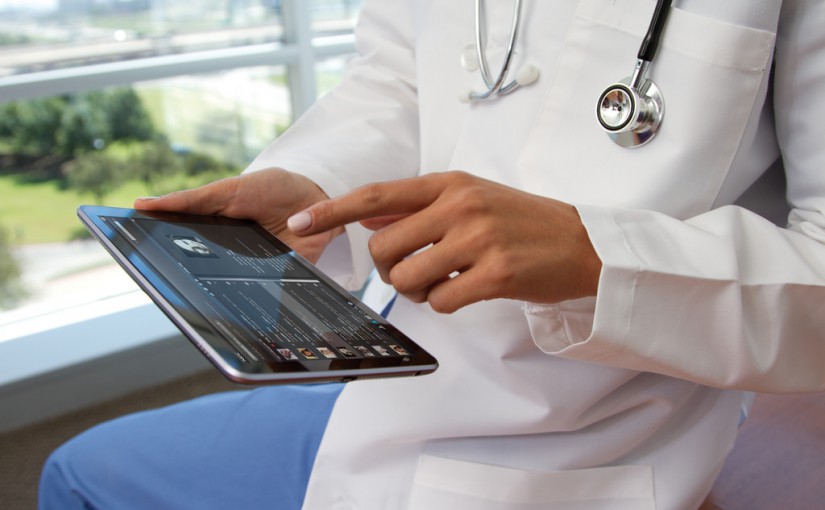Is the 10 minute GP consultation model fit for purpose?
Your last year of training has many challenges. The portfolio is a nightmare. The exams are expensive and intense. You have to adjust to 11 hour days. But for me and many other fellow trainees, the biggest challenge was the approach of the dreaded ten-minute consultation.
Like most supportive trainers, mine allowed me to have a slow wean from the safety of the 15-minute appointment. Fresh from a new found confidence having passed the CSA, I felt ready when she gently nudged me down to ten minutes. But it doesn’t matter how many consultation models you read, how structured you think you are being, or how well you can multi-task, because ten minutes is HARD.
GP’s are hugely efficient when it comes to consulting. Not only do we deal with the presenting complaint, but we tackle ongoing chronic disease management, QOF, and squeeze in a touch of health behaviour modification.
But Neighbour and Pendleton simply aren’t there to help when the patient brings a list of problems, or when you think you're rounding off a consultation for back pain but the patient breaks down and reveals they are depressed.
Thank goodness for catch up slots, or the odd DNA. For many GPs and patients, ten minutes simply isn’t enough and quite possibly even gives GP’s a bad reputation.
So it begs the questions: do fixed ten minute consultations have a place in modern day general practice? Who decided on this time restriction anyway?
The NHS has always been a political football, and pledges to improve patient access to appointments are always high on any political campaign strategy. Although no legislation about ten minute consults exist, practices often adopt this model to increase the number of available appointments in an attempt to meet patient demand.
And demand there is. In 2013, the number of GP consultations rose to 340 million, a 13 percent increase from 2008. 90% of NHS consultations take place in primary care and the average member of public sees their GP six time a year, double from the previous decade.
Lack of available appointments has also been blamed for increasing stress on emergency departments. How else can this demand be met other than packing the day full of ten-minute appointments?
But the ten-minute consultation model is losing support. In a recent BMA survey, 9 out of 10 GPs thought that the “ten-minute” standard was inadequate to provide good quality patient care. Should access be the main priority or do other indicators of quality need to come up the ranks, such as holistic care, through care planning and continuity? We must look at other ways to consult.
The RCGP thinks that technology could be the answer. In the 2013 policy paper “2022 GP A vision for General Practice in the NHS”, the RCGP states: “Simply increasing the quantity of face-to-face GP consultations alone will not be a cost-effective or sustainable strategy for achieving increased capacity and meeting growing demand.”
It goes on to say that technology will be important in providing flexible ways to consult, including telephone, email and skype consultations. Practices piloting skype models have reported good patient satisfaction and are a particularly useful tool for those patients who work full time or with mobility problems.
Technology may assist us with workload, but so many patients still need face to face assessments. Could longer appointments solve the problem then?
In the same BMA survey one if four GP’S reported that every patient should have a longer appointment time. Dr Beth McCarron, a GPC executive lead, thinks this approach could be better for patients and doctors.
She says “Anecdotally, GP colleagues tell me that they have never felt so stressed and been so overworked.” She believes allowing more time for health promotion and holistic are would decrease the number of follow up appointments. Ultimately this could be cost effective for the NHS in the long run.
But do all patients need 15 minutes? Several practices have piloted schemes where patients were empowered to book anywhere between 5 and 20 minute appointments, based on what they felt they needed from the consultation.
Researchers reported improved patient and doctor satisfaction with the model, although this was not universally felt by all, with some GPs fearing the freedom of choice could be misused.
Whatever the answer, one thing is for sure; GPs are busier than ever and consultations are increasingly complex as we manage an ageing population with multiple co-morbidities.
In a time of increasing pressures, is the ten-minute model fit for purpose?
Anna Cantley is a GP graduating from London this summer
References:
http://careers.bmj.com/careers/advice/Consultation_times
http://www.gponline.com/length-gp-consultations-should-controlled-patients/article/1171486
BMA Press Briefing General Practice In The UK July 2014
J Gen Pract. Sampson, R, O’Rourke, J, et al (2003) Sharing control of appointment length with patients in general practice: a qualitative study
Published online 2013 February 21. doi: 10.3399/bjgp13X664234
RCGP: The 2022 GP - A vision for general practice in the future of the NHS


